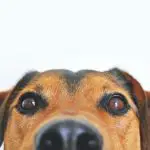Sourcing aggression within dogs
In reported incidents surrounding the aggressive dominance of dogs, fertile males are reported to be the highest. In a decreasing order of such instances, respectively, are neutered males and spayed females, and concluding with fertile females. Although aggression is present within all breeds of dogs, Doberman Pinschers, any terrier breed, and the Toy Poodle are, by record, to have received the highest rankings where dominant aggression has been cited.
Aggression in dogs can be directed towards their owners if the pets assume that their role of dominance is being either opposed or threatened. Circumstances provoking such aggressive behavior include domination over feed, preferred individuals, respite areas, valued possessions, or any important item that such agitated canines covet. Among canine aggression, dog owners inquire of professionals in regards to the scenarios surrounding dominance aggression more frequently than alternate forms of aggression. Actual dominance aggression varies from low to high in degrees of intensity. Upon a dog reaching its second year of age, which is referred to as social maturity, is when dominance aggression can begin to surface. Through a variety of intermixed techniques of a therapeutic nature, such treatment for afflicted dogs requires life-long management.
At its roots, dominance aggression fostered amid the social gatherings of wolves. Wolves are classed as the most directly related relatives of domesticated dogs. Socially, wolves live in what is referred to as packs. Each pack draws from a hierarchy that is social in nature. Amid the individual packs, every wolf is aware of its ranking, in relevance to the other members of the pack. It is the more dominant of the wild species that maintain superiority to vital natural-based necessities, such as food, resting areas and water. The hierarchy presents itself dynamically, as opposed to a fixed governing, and utilizes a system of communication that is of a complexity, by way of signaling that is either dominant or submissive. Functionality within this imposed hierarchy is partly to alleviate the packs aggression. As the hierarchy achieves stability, such intensities of aggression are neutralized. On the flip side, where domesticated dogs exist, the manifestation of dominance aggression arises upon their perceptions that the households hierarchy has become unbalanced.
Upon diagnosing the behavior of a questionable dogs behavior is to observe it during a display of aggression. During dominance aggression, dogs, in general, will more than likely, though not consistently, strikes a dominant pose. This pose will consist of an extreme upright or rigid positioning of the body, to include a focused stare, elevated hackles, and an extreme erectness to the ears and tail. Based upon the elevated level of the display of aggression, biting, growling, lunging and snarling can be witnessed. In a notable number of dogs that possess dominance aggression, there is a lack of presence within the more intense posturing. If such a lack of intensity within an instance of dominance aggression occurs, it usually is analyzed as a variance between dominance and fear.
Above all, as a definite behavioral complexity, dominance aggression presents a problematic risk to the humans confronted, and, in particular, children that dwell within the same environment as the dog in question.
To gain more knowledge about dominance aggression, utilize the resources of search engines, such as Google.com and Yahoo.com. Upon searching, through relevant keywords associated with aggression in dogs, review the posted articles, blogs, forums and supportive websites.


